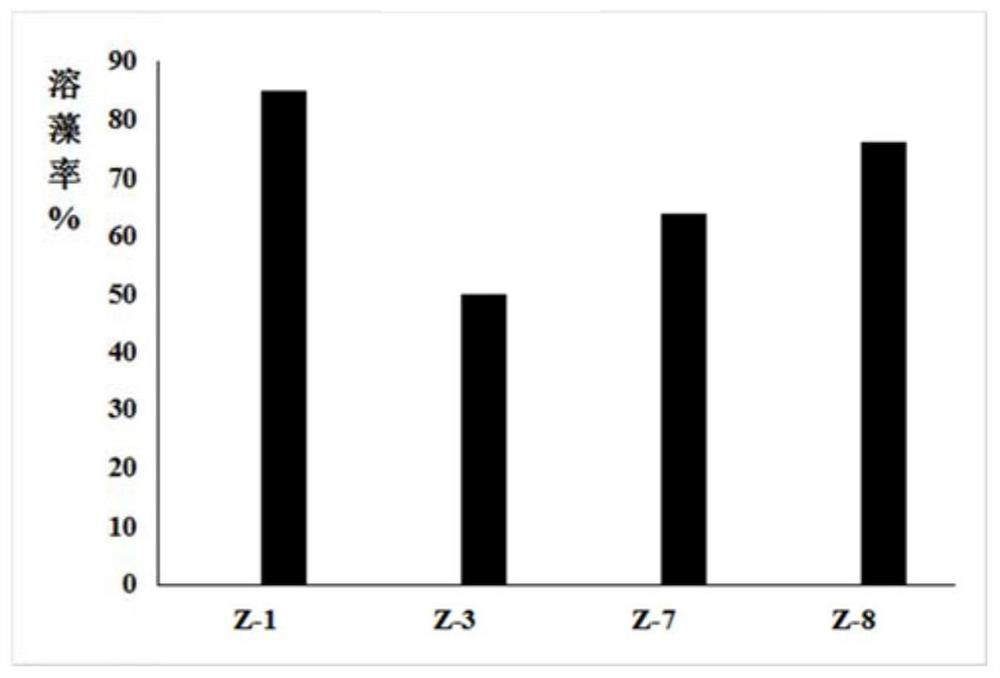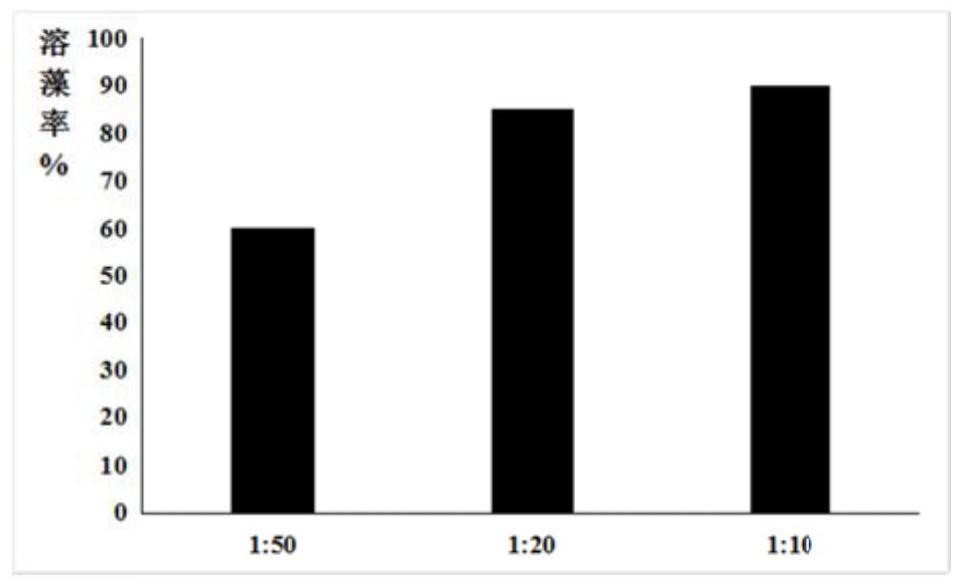Microcystis aeruginosa lysozyme and application thereof
A technology of Microcystis aeruginosa and Microcystis, which is applied in the field of microbial engineering and can solve problems such as water body algae pollution
- Summary
- Abstract
- Description
- Claims
- Application Information
AI Technical Summary
Problems solved by technology
Method used
Image
Examples
Embodiment 1
[0029] Example 1: Isolation, screening and identification of thermotolerant bacillus Z-1
[0030] 1. Experimental materials
[0031] Activated sludge of the second sewage plant in Ma'anshan City, Anhui Province
[0032] The Microcystis aeruginosa used was purchased from the Wuhan Institute of Hydrobiology, Chinese Academy of Sciences. After the algae were activated, they were cultured at 25°C, with a light intensity of 2000lx and a light-to-dark ratio of 12h:12h.
[0033] 2. Medium
[0034] LB liquid medium: tryptone 10g / L, yeast extract 5g / L, NaCl 10g / L.
[0035] LB solid medium: tryptone 10g / L, yeast extract 5g / L, NaCl 10g / L, agar 20g / L.
[0036] Culture algae BG11 medium:
[0037]
[0038] 3. Screening of algalytic bacteria Take the activated sludge from the No. 2 Sewage Treatment Plant in Ma'anshan City, Anhui Province, remove the supernatant at rest, take 5mL of activated sludge, inoculate it into LB medium, and place it in a constant temperature incubator at 30°C....
Embodiment 2
[0047] The discussion of embodiment 2 algae-dissolving mode
[0048] Centrifuge the liquid-cultured Z-1 culture at 1200r / min, separate the bacteria from the supernatant, take the supernatant and filter it with a microporous membrane with a pore size of 0.22nm, wash the bacteria twice with sterile distilled water, and take the filtrate Inserted into liquid-cultured Microcystis at a volume ratio of 10%, and at the same time, bacterium was added to cultured Microcystis, and a blank algae solution was set as a control. Observe the color change of the water body every day, whether the microcystis is yellowed, and whether the algae are agglomerated. At the same time, the chlorophyll a of each group of Microcystis aeruginosa was measured.
[0049] The experiment found that in the experimental group of bacteria and algae liquid alone, the growth of algae was good, while in the experimental group of bacteria supernatant and bacteria liquid, the algae gradually turned yellow after the ...
Embodiment 3
[0051] The influence of embodiment 3 temperature on the effect of dissolving algae
[0052] Temperature is an important environmental condition for the growth and energy metabolism of strains, and has a great influence on the algicidal efficiency of strains. Determining the optimum temperature range in the application process is the key to ensuring the maximum potential of strains. The cultured bacteria were inoculated with Microcystis at a ratio of 5%, and placed in light incubators at 20°C, 30°C, 35°C, and 40°C respectively. figure 2 After one week, the algae-dissolving rate of each experimental group was measured to be 30%, 64%, 88%, and 83%, respectively.
[0053] The results show that the algae-dissolving efficiency is the highest when the temperature is around 35°C. In practical application, the outbreak of eutrophic algae generally occurs in summer when the temperature is higher.
PUM
| Property | Measurement | Unit |
|---|---|---|
| Aperture | aaaaa | aaaaa |
Abstract
Description
Claims
Application Information
 Login to View More
Login to View More - R&D
- Intellectual Property
- Life Sciences
- Materials
- Tech Scout
- Unparalleled Data Quality
- Higher Quality Content
- 60% Fewer Hallucinations
Browse by: Latest US Patents, China's latest patents, Technical Efficacy Thesaurus, Application Domain, Technology Topic, Popular Technical Reports.
© 2025 PatSnap. All rights reserved.Legal|Privacy policy|Modern Slavery Act Transparency Statement|Sitemap|About US| Contact US: help@patsnap.com



